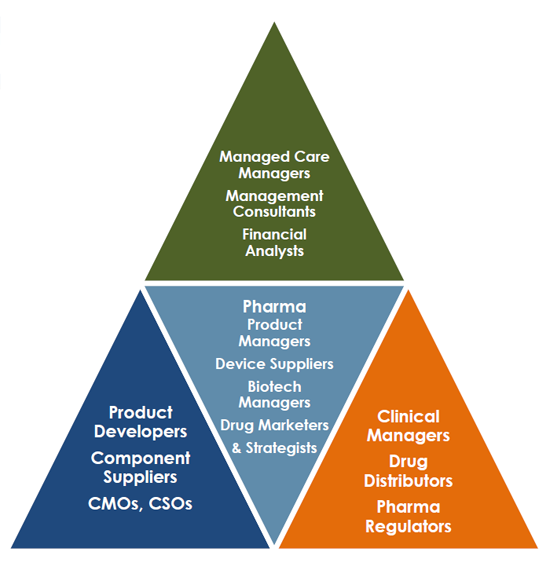
|
市場調査レポート
商品コード
1718479
吸入型中枢神経系治療薬市場:製品、市場、戦略、予測、標的Inhaled CNS Therapeutics - Products, Markets, Therapeutics, Strategies & Forecasts |
||||||
|
|||||||
| 吸入型中枢神経系治療薬市場:製品、市場、戦略、予測、標的 |
|
出版日: 2025年05月02日
発行: Greystone Research Associates
ページ情報: 英文 102 Pages
納期: 即日から翌営業日
|
全表示
- 概要
- 目次
この新たな市場調査「吸入型中枢神経系治療薬市場:製品、市場、戦略、予測、標的」は、ドラッグデリバリー分野の成長分野の原動力となっている技術、製品、参入企業を包括的に評価・分析したものです。当レポートは、製薬企業の意思決定者、薬剤開発・製剤開発者、薬剤デバイス設計者、業界戦略担当者に、吸入中枢神経系治療が医薬戦略やヘルスケア治療プロトコルに与える影響の拡大について詳細に理解していただくために作成されました。また、医療機関のビジネスマネージャー、ヘルスケア管理者、投資家にとっても有益な内容となっています。
成長促進要因
中枢神経系に薬剤を投与することは、特有の課題をもたらします。しかし、薬剤開発者と研究者は、中枢神経系の治療薬を吸入によって送達することで、これらの問題のいくつかが軽減されることを発見しました。鼻はアクセスしやすく、血管が発達しているため、低分子薬物や生物製剤を血液脳関門を越えて中枢神経系に送達するための魅力的な経路です。肺深部への投与は、良好な薬物動態を示す可能性があります。また吸入型送達は、経口薬に比べて作用発現が早く、投与回数が少なくて済む可能性があります。こうした潜在的な利点が、さまざまな疾患に対する吸入中枢神経系治療薬の開発に拍車をかけています。人口の高齢化とマネージド・ケアの取り組みにより、在宅医療と薬物療法の自己管理が拡大する中、吸入医療は患者に優しく、費用対効果に優れているとの見方が強まっています。当社の分析によると、吸入中枢神経系投与はこうした動向を十分に活用できる立場にあり、中枢神経系治療薬の医薬品開発と商業化の将来において重要な要素に発展することが示唆されました。
レポートのバリューマトリックス

何を学ぶか
- どのような吸入性薬剤が粉末状で供給され、どのように販売され、どのようなデバイスがあり、誰が販売しているのか?
- 後期開発段階にある吸入可能なドライパウダー医薬品は何か、開発者は誰か、どのような適応症を標的にしているか。
- 吸入ドライパウダー薬/デバイスの需要を促進する主な要因は何か?
- 現在の市場規模、市場シェアリーダーは誰か、2026年の市場シェアは?
- 医薬品開発企業とデバイスメーカーの関係はどの程度重要か、また業界における主な提携関係は?
- ドライパウダー吸入製品に不可欠な設計要因、技術、市場開拓の課題は何か?
- ドライパウダー吸入器市場に影響を与える重要な経済、技術、規制要因は何か?
調査手法:
調査手法は、主要市場参入企業、技術開発者、流通業者、業界専門家、市場影響者(規制当局者、業界団体、材料規格団体を含むリスト)への詳細なインタビューという形での1次調査に基づいています。
一次情報は、業界誌記事、技術文献、業界出版物、企業のデータシートや公表情報、政府機関や業界団体の統計データなどの二次情報と照らし合わせて評価し、正規化します。
市場需要および将来の市場活動の予測および予想は、標準的なモデリングおよび統計技術を用いて導き出されます。
目次
- エグゼクティブサマリー
- ドラッグデリバリー市場力学
- 自己管理への傾向
- 中枢神経系治療薬市場力学
- 在宅ヘルスケアの成長
- 市場促進要因
- 市場戦略
- 吸入型薬剤の主な要因
- 吸収
- バイオアベイラビリティ
- デバイス設計パラメータ
- 経鼻投与の薬物動態
- 鼻腔デバイスの特徴
- 肺送達の薬物動態
- 肺デバイスの特性
- ドライフィルム技術
- 吸入中枢神経系薬:FDA承認製品
- うつ
- エスケタミン(Spravato);Janssen Pharmaceuticals
- 片頭痛
- ジヒドロエルゴタミンメシル酸塩
- スマトリプタン(イミトレックス)
- ゾルミトリプタン(ゾミッグ)
- 疼痛管理
- ブトルファノール
- ケトロラク(Sprix)/Zyla Life Sciences
- フェンタニル/ ラザンダ
- アダスベ/ロキサピン(Galen/米国)
- 発作
- ジアゼパム(バルトコ)
- パーキンソン病
- レボドパ(インブリジャ)
- 発作
- ナイジラム(ミダゾラム)
- 吸入型中枢神経系市場セグメント分析
- アルツハイマー病と認知症
- うつ
- 不眠症
- 片頭痛
- 疼痛管理
- パーキンソン病
- 統合失調症
- 発作
- 市場要因
- FDA規制
- 臨床試験
This new market study, "Inhaled CNS Therapeutics: Products, Markets, Strategies, Forecasts, & Targets" is a comprehensive evaluation and analysis of the technology, products and participants providing the driving force behind this growing segment of the drug delivery sector. The report has been designed and developed to provide pharmaceutical company decision makers, drug developers and formulators, drug device designers, and industry strategists with a detailed understanding of the expanding impact of inhaled CNS therapies on pharmaceutical strategies and healthcare treatment protocols. Provider organization business managers, healthcare administrators and investors will also benefit from this publication.
Converging Factors Driving Advances
Delivering drugs to the central nervous system presents unique challenges. But, drug developers and researchers have discovered that delivering CNS therapeutic drugs via inhalation mitigates several of these issues. The accessibility and vascular structure of the nose make it an attractive route for delivering both small molecule drugs and biologics across the blood-brain barrier to the CNS. Pulmonary delivery to the deep lung can have favorable pharmacokinetics. And inhaled delivery offers the potential for faster onset of action and less frequent dosing relative to oral drugs. These potential advantages have spurred activity in inhaled CNS therapeutics for a range of disorders. As aging population demographics and managed care initiatives drive growth in home health care and self-administration of drug therapies, inhaled medicine is increasingly being viewed as patient-friendly and cost-effective. Our analysis indicated that inhaled CNS administration is well positioned to take advantage of these trends and evolve into a significant factor in the future of pharmaceutical development and commercialization of CNS therapeutic drugs.
Report Value Matrix

What You Will Learn:
- What inhalable drugs are supplied in powder form, how are they marketed, what are the device specifics, and who markets them?
- What inhalable dry powder drugs are in late stage development, who are the developers, and what indications are they targeting?
- What are the major factors driving inhaled dry powder drug/device demand?
- What is the size of the market today, who are the market share leaders, and what will the market share be in 2026?
- How important are drug developer-device manufacturer relationships and what are the key alliances in the industry?
- What are the essential design factors, technologies and market development issues for dry powder inhalation products?
- What are the significant economic, technology, and regulatory factors affecting the market for dry powder inhalers?
Methodology:
Research methodology is based on primary research in the form of in-depth interviews with key market participants, technology developers, distributors, industry experts, and market influencers, a list that includes regulatory officials, industry trade groups, and materials standards organizations.
Primary data is evaluated and normalized against secondary sources including trade journal articles, technical literature, industry publications, company data sheets and published information, and statistical data from government agencies and trade associations.
Forecasts and projections of market demand and future market activity are derived using standard modeling and statistical techniques.
Table of Contents
- Executive Summary
- Drug Delivery Market Dynamics
- The Trend toward Self-Administration
- CNS Therapeutic Market Dynamics
- Growth in Home Healthcare
- Market Drivers
- Market Strategies
- Key Inhaled Drug Factors
- Absorption
- Bioavailability
- Device Design Parameters
- Nasal Delivery Pharmacokinetics
- Nasal Device Characteristics
- Pulmonary Delivery Pharmacokinetics
- Pulmonary Device Characteristics
- Dry Film Technology
- Inhaled CNS Drugs: FDA-Approved Products
- Depression
- Esketamine (Spravato); Janssen Pharmaceuticals
- Migraine
- Dihydroergotamine Mesylate
- Sumatriptan (Imitrex)
- Zolmitriptan (Zomig)
- Pain Management
- Butorphanol
- Ketorolac (Sprix)/ Zyla Life Sciences US
- Fentanyl / Lazanda
- Adasuve/Loxapine (Galen / US)
- Seizures
- Diazepam (Valtoco)
- Parkinson's Disease
- Levodopa (Inbrija)
- Seizures
- Nayzilam (Midazolam)
- Inhaled CNS Market Segment Analysis
- Alzheimer's and Dementia
- Depression
- Insomnia
- Migraine
- Pain Management
- Parkinson's Disease
- Schizophrenia
- Seizures
- Market Factors
- FDA Regulations
- Clinical Trials


